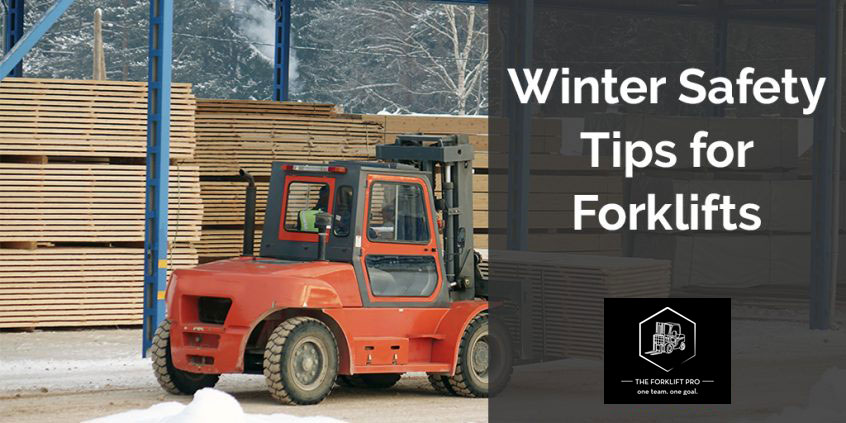Winter is officially here and temperatures are quickly dropping. When working in warehouses and operating forklifts, cold weather can pose several problems. Unfortunately, there’s not much you can do to change the winter weather conditions – but there are a few forklift safety tips during cold weather that The Forklift Pro can offer.
Correct clothing
To safely operate a forklift, operators should wear tight fit clothing, a high-visibility jacket, safety shoes, and a hard-hat if appropriate. These requirements can be tough when temperatures start to dip below 50 degrees. When cold weather strikes, ensure that forklift operators are adorned in safe winter clothing. Bulky jackets, pants, and scarves should be removed before operating the equipment.
Inspect equipment
After timecards have been punched and it’s time to get the work day started, the forklift must be inspected. The Occupational Safety and Hazard Administration (OSHA) requires that all forklifts be examined daily before being placed in service. Forklifts that are used constantly need to be examined at the end of each shift.
Cold weather can affect a lot of things – including the parts and operation of a forklift. For example, sudden drops in temperature can decrease tire pressure or cause hoses to crack. According to OSHA’s guide for pre-operation inspection, these parts and components, among others, should be inspected before a forklift is used.
Environment check
The winter season often entails more than just lower temperatures. We must face snow, sleet, ice, and frost. Depending on your work environment, the chances of the elements affecting the operations of a forklift can be high. To operate a forklift safely in winter weather, first check that the travel path is clear of any hazards. In addition to hazards like holes and bumps, be on the lookout for water and ice. These dangers could cause the forklift to swerve, slide, or lose traction.
Slow down and stay back
Because of the potential hazards mentioned above, it is crucial to be cautious while operating a forklift in winter weather. While true in any weather, it is pertinent that forklift operators navigate the equipment cautiously. In Yale’s tips for safe handling, they advise to “travel slowly when turning corners or going around bends as the combination of speed and the sharpness of turn can result in a tip over.” In regards to keeping a safe distance, Yale explains, “unless absolutely necessary, do not operate equipment in close proximity to other equipment being used.” Operators following these guidelines have a lower chance of injury or damages if they were to face water, ice, or frost in their path.

